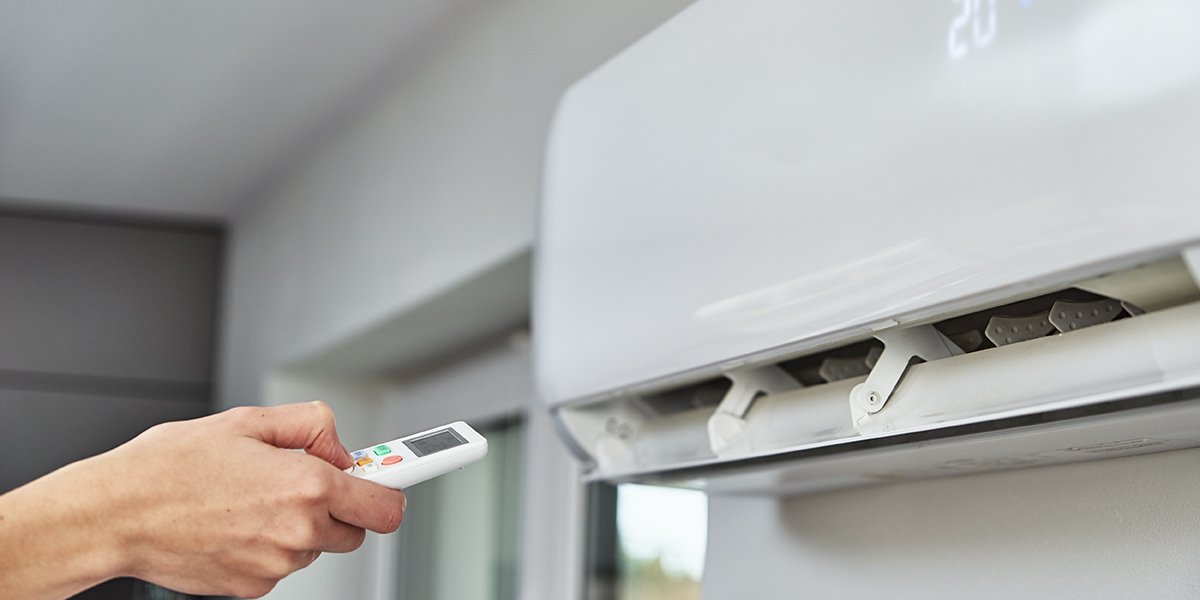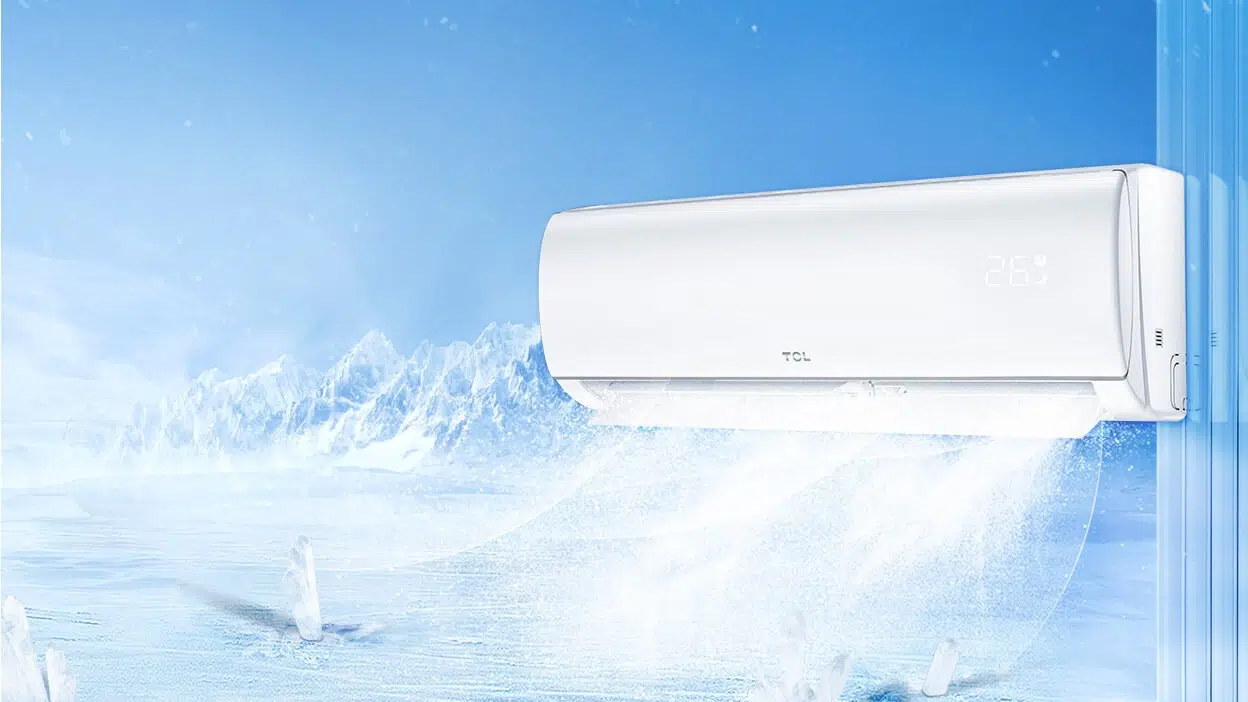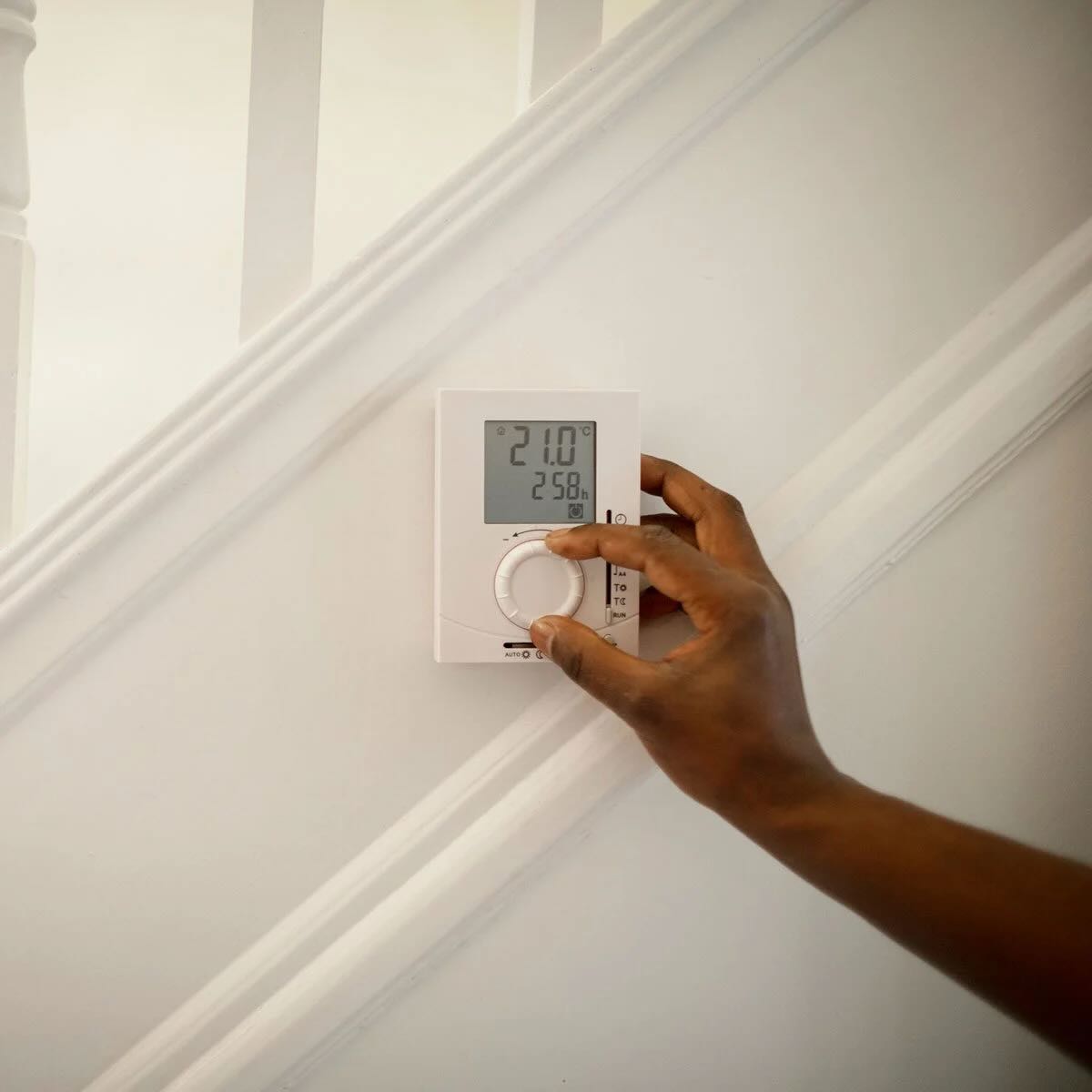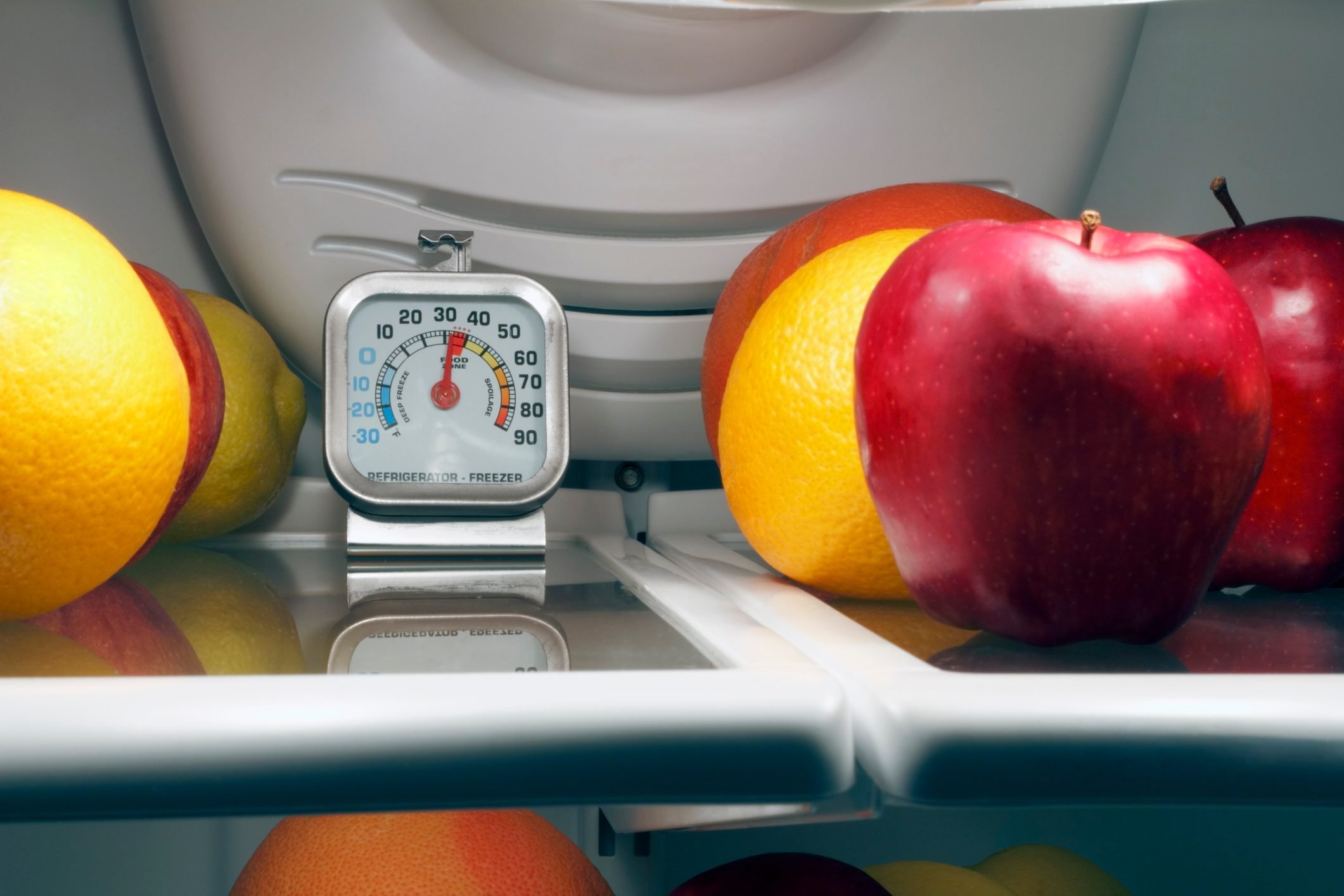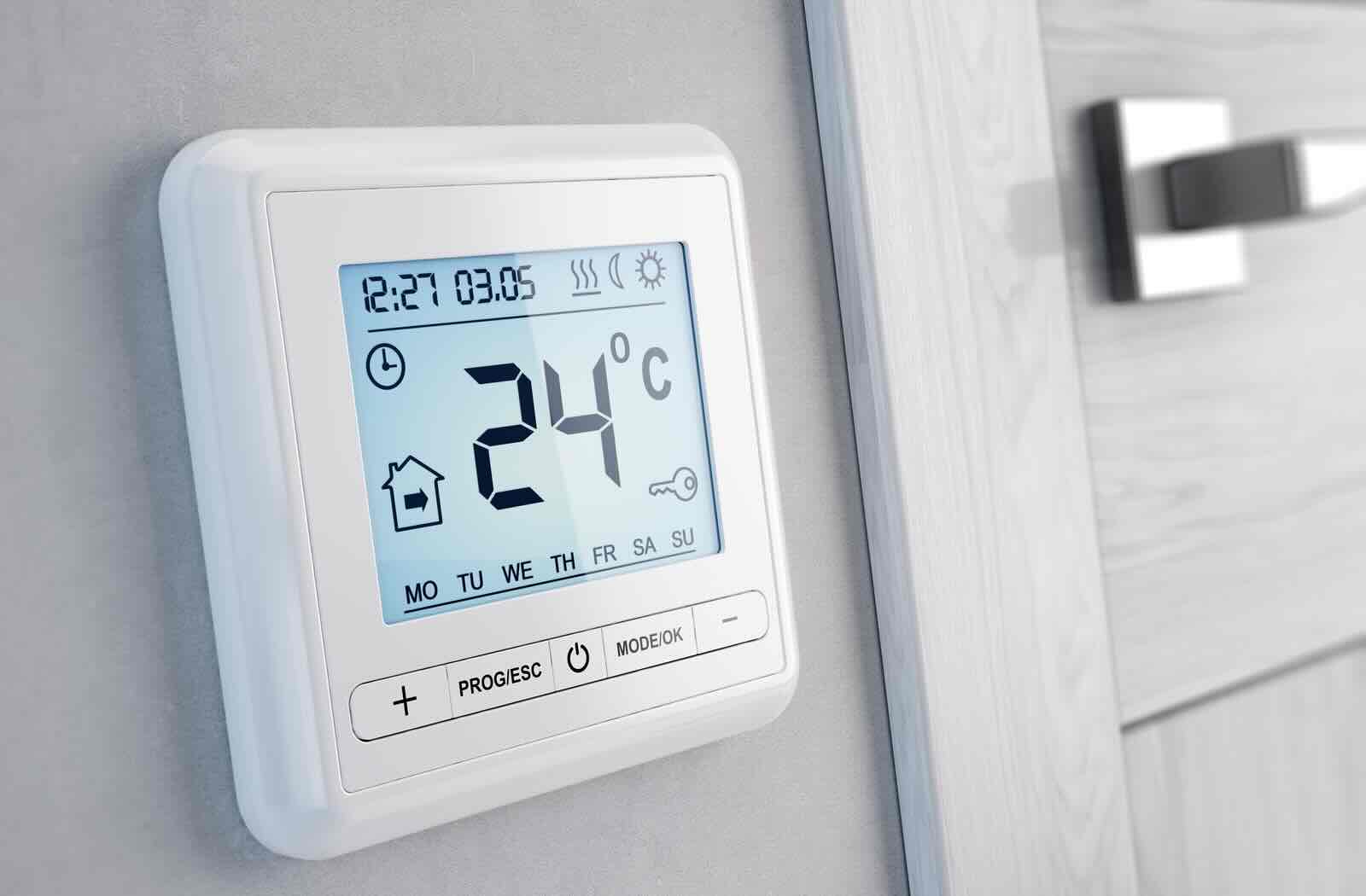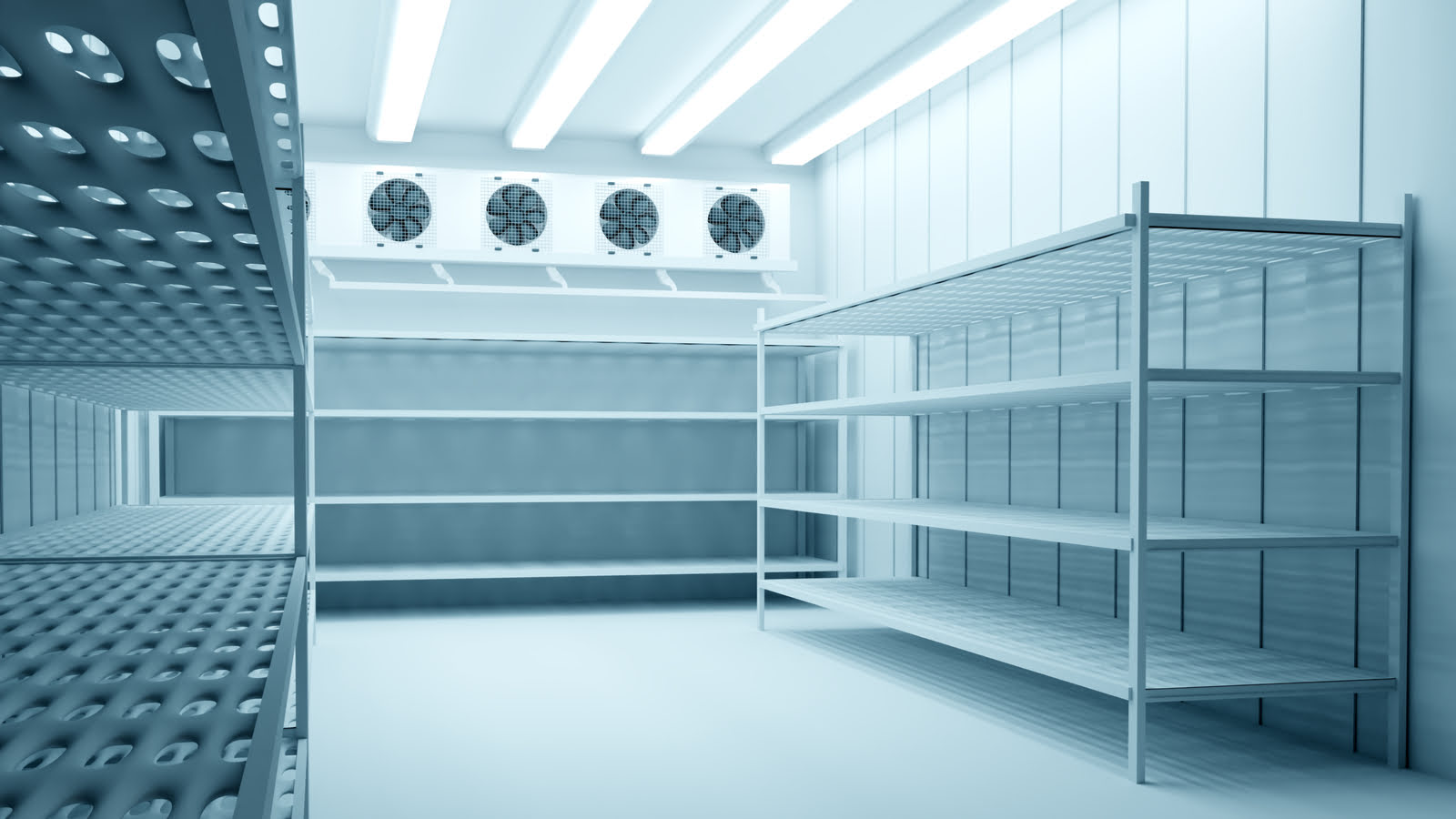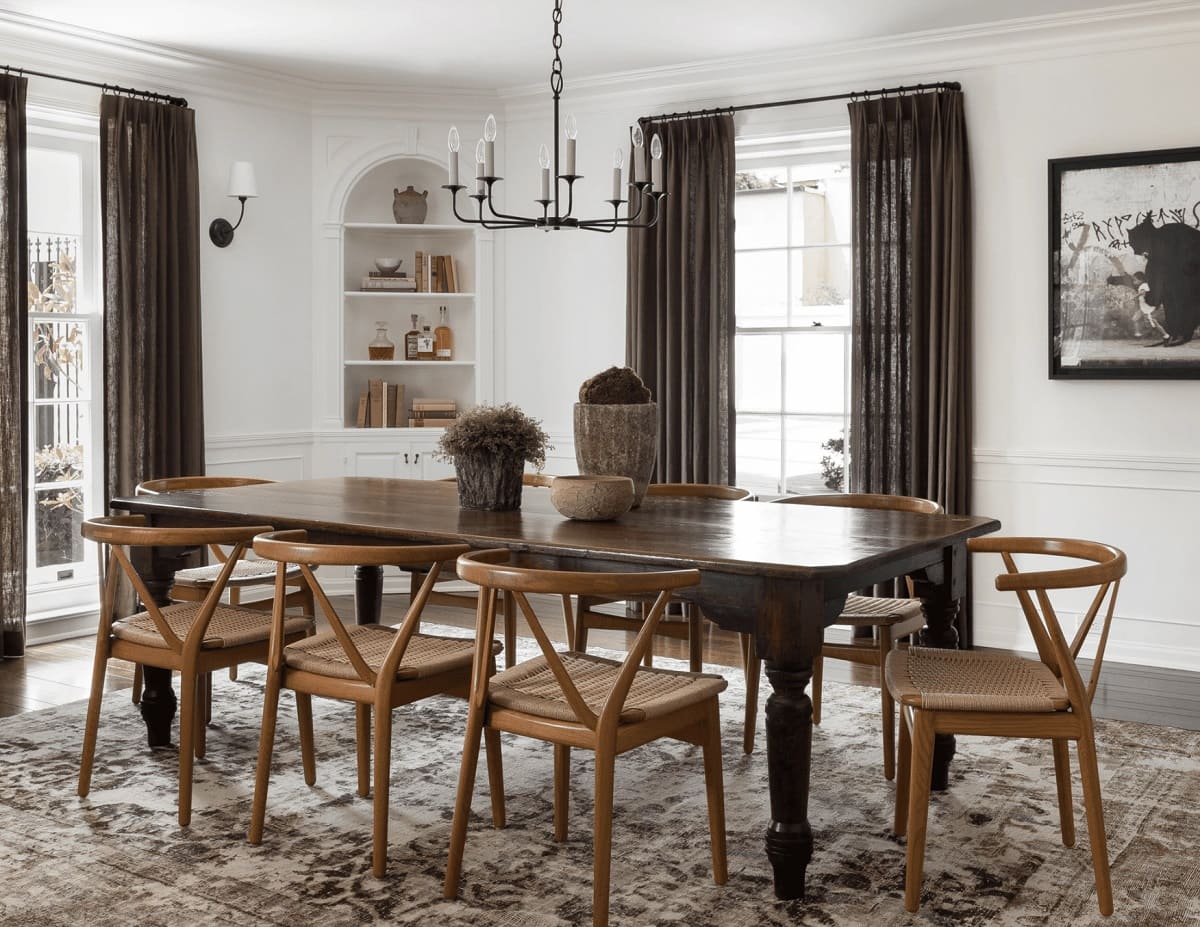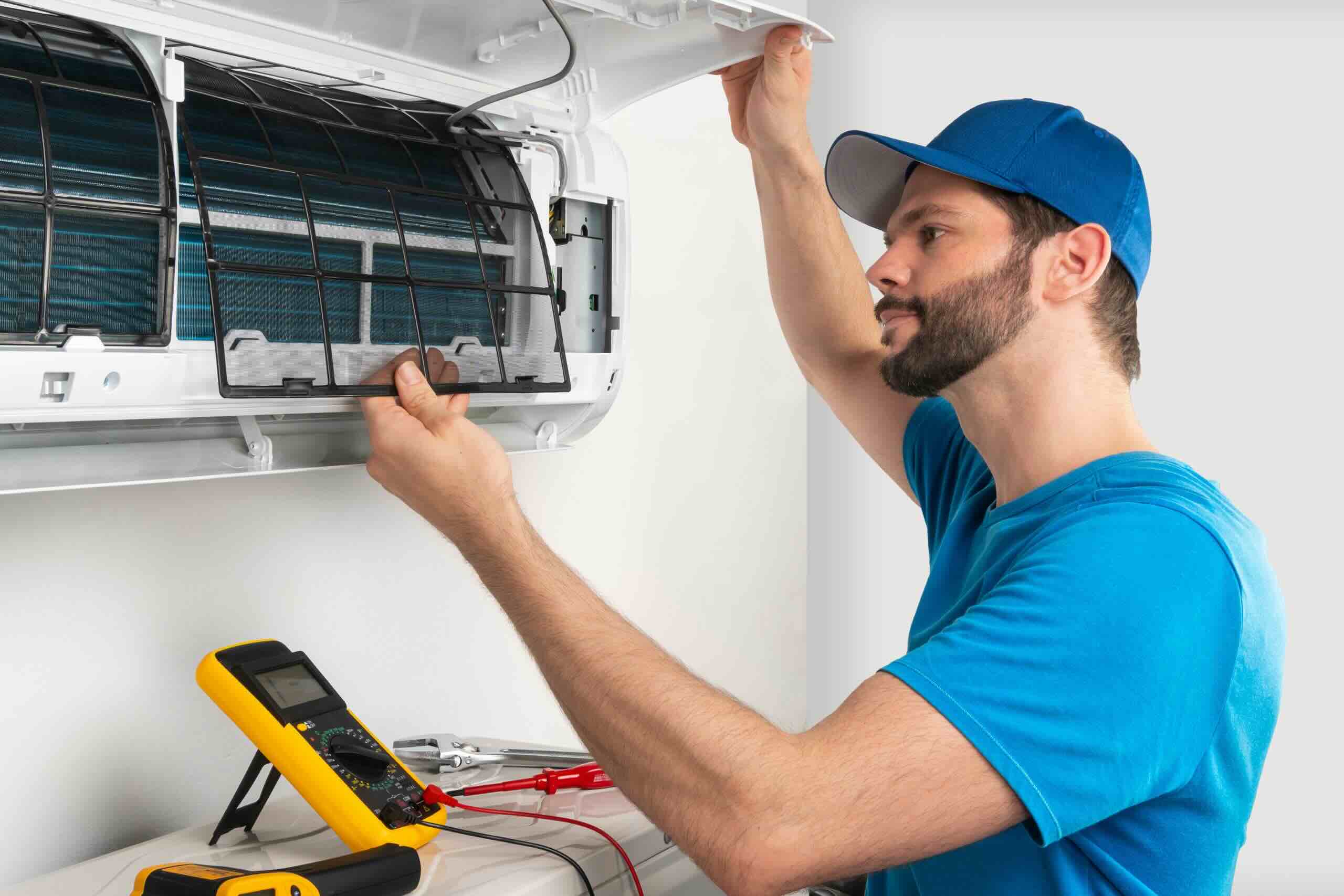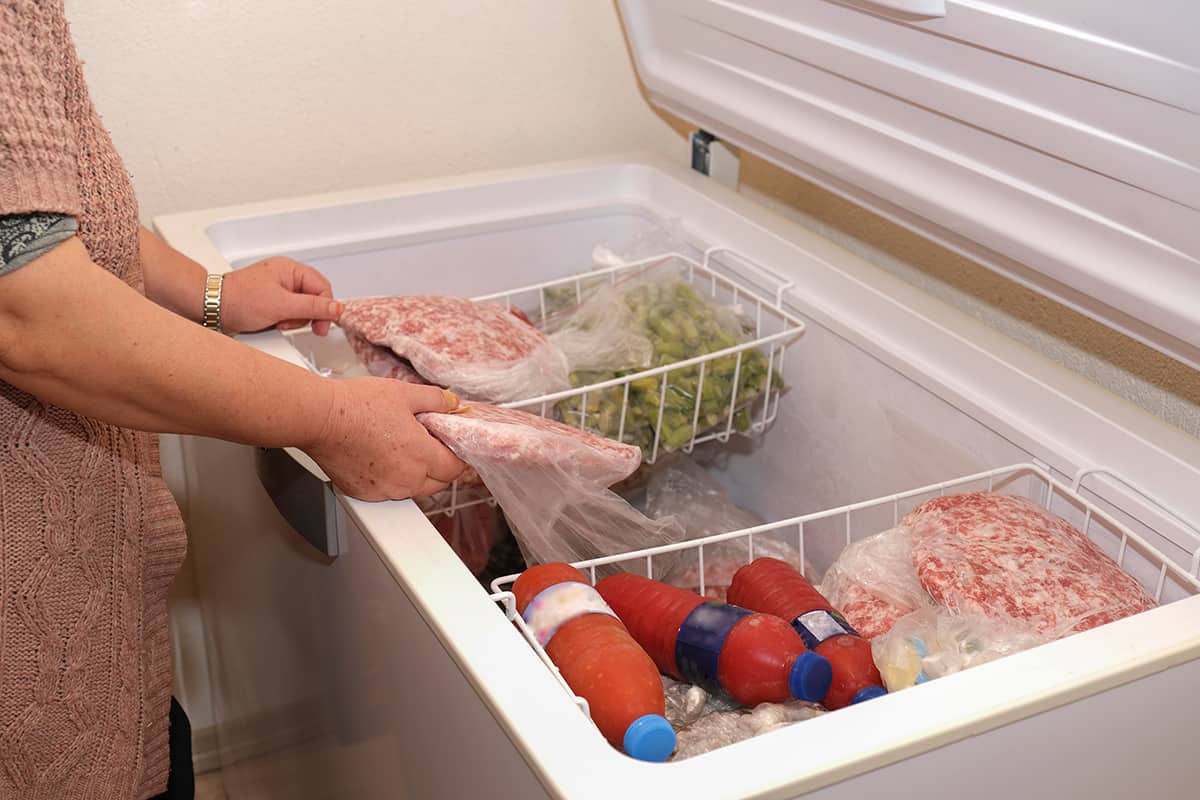Home>Home Maintenance>What Temperature Should Your Air Conditioner Be Set At
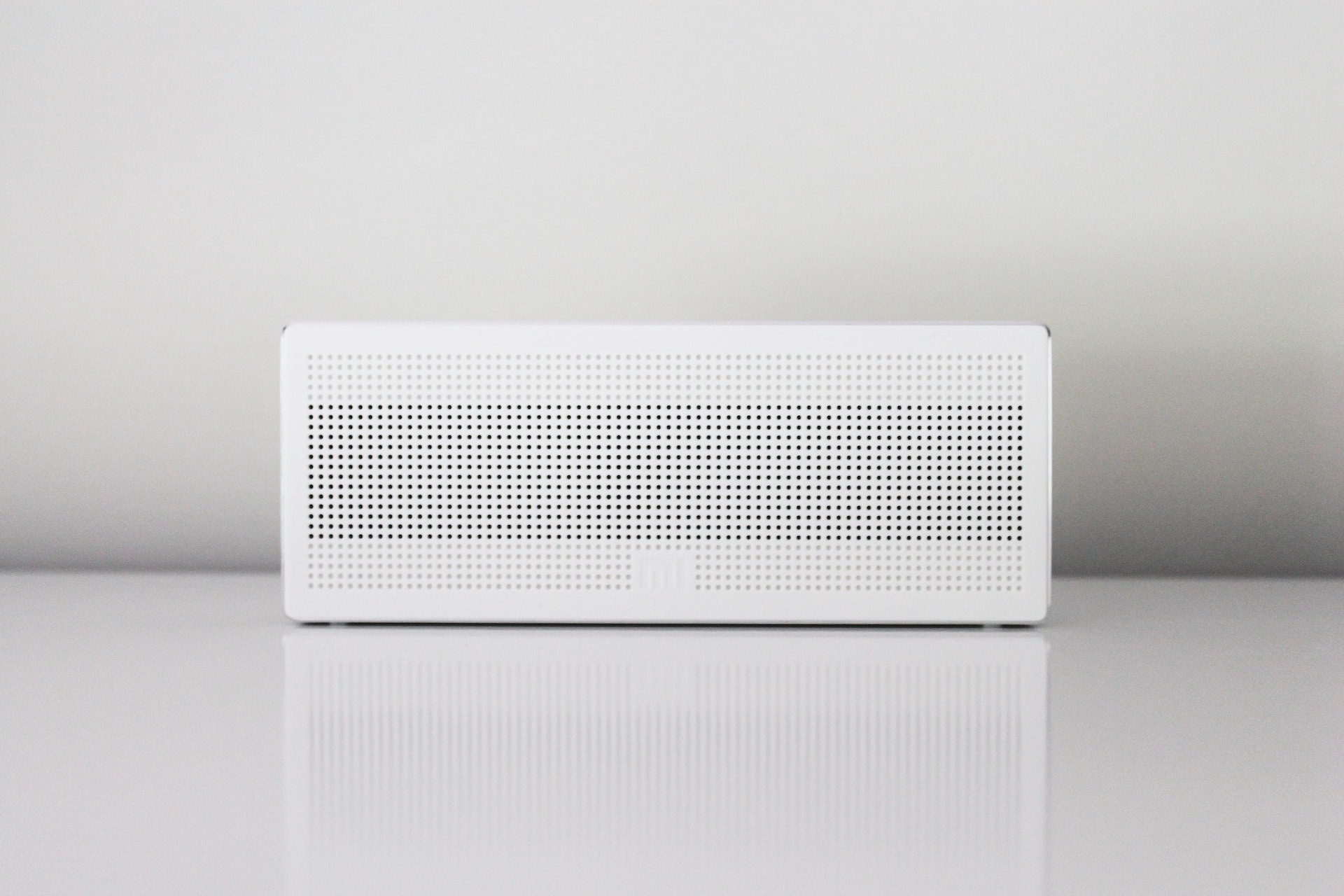

Home Maintenance
What Temperature Should Your Air Conditioner Be Set At
Modified: March 7, 2024
Learn the ideal temperature to set your air conditioner for optimal comfort and energy efficiency. Expert advice on home maintenance and cooling efficiency.
(Many of the links in this article redirect to a specific reviewed product. Your purchase of these products through affiliate links helps to generate commission for Storables.com, at no extra cost. Learn more)
Introduction:
Welcome to the world of home maintenance where we explore the ins and outs of keeping your space in tip-top shape. In this article, we’ll delve into the fascinating topic of setting the temperature for your air conditioner. Finding that perfect balance between efficiency and comfort is key to maximizing the lifespan of your cooling system and creating a pleasant environment in your home.
When it comes to setting the temperature for your air conditioner, there are a few factors you need to consider. These factors include energy efficiency, personal comfort preferences, and the climate you live in. Additionally, understanding the impact of temperature on your overall energy consumption and monthly utility bills is crucial.
In the following sections, we’ll discuss the optimal temperature ranges for both efficiency and comfort, along with some practical tips for setting the temperature to meet your needs. So, whether you’re looking to save on energy costs or simply create a cool sanctuary during those sweltering summer days, read on to discover the secrets of the perfect air conditioner temperature.
Key Takeaways:
- Find the perfect balance between energy efficiency and comfort by setting your air conditioner to around 78°F (25.5°C) when at home and raising it by 7-10°F (4-6°C) when away to save on energy bills.
- Experiment with different temperature settings, utilize fans, and consider nighttime cooling to find the ideal comfort level for a restful sleep between 60-67°F (15-19°C).
Factors to Consider:
Before you set the temperature on your air conditioner, it’s important to consider a few key factors that will impact your decision. These factors include:
- Climate: The climate in which you live plays a significant role in determining the temperature at which you should set your air conditioner. If you reside in a hot and humid area, you may need to set the temperature lower to achieve a comfortable indoor environment.
- Insulation: The insulation of your home affects how well it retains cool air. If your home is poorly insulated, you may need to set the temperature lower to compensate for any potential heat transfer.
- Occupancy: The number of people occupying your space will impact your air conditioner’s workload. If your home is frequently occupied, you may need to set the temperature lower to ensure everyone remains comfortable.
- External Factors: Consider any external sources of heat, such as direct sunlight or nearby appliances, that could affect the indoor temperature. Adjust your air conditioner temperature accordingly to counteract these external factors.
By considering these factors, you can make an informed decision when determining the optimal temperature for your air conditioner.
Optimal Temperature for Efficiency:
Setting the temperature of your air conditioner for optimal efficiency is not only great for the environment but also for your wallet. Here are some guidelines to help you find the sweet spot:
During the summer months, it is recommended to set your air conditioner to a temperature of around 78 degrees Fahrenheit (25.5 degrees Celsius) when you’re at home. This temperature provides a good balance between comfort and energy efficiency. However, if you can tolerate a slightly warmer indoor temperature, setting it a few degrees higher can save even more energy.
When you’re away from home, consider raising the temperature by 7-10 degrees Fahrenheit (4-6 degrees Celsius). This will help reduce unnecessary energy consumption while ensuring that your home doesn’t become too hot and stuffy.
It’s worth noting that each degree you raise your thermostat can result in a 1-3% reduction in overall energy usage. So, by setting your air conditioner to a higher temperature, you can significantly cut down on your energy bills.
In addition to adjusting the temperature, make use of programmable thermostats. These devices allow you to pre-set temperature changes throughout the day, ensuring that your air conditioner runs optimally when needed and remains idle when you’re away.
Remember, finding the right balance between efficiency and comfort is crucial. While energy savings are important, it’s equally important to maintain a comfortable indoor environment.
Optimal Temperature for Comfort:
When it comes to setting the temperature for optimal comfort, personal preference plays a significant role. However, there are a few general guidelines to keep in mind:
For most individuals, a temperature range between 72-76 degrees Fahrenheit (22-24 degrees Celsius) is considered comfortable during the summer months. This range allows for a cool and pleasant indoor environment without being too chilly.
However, it’s essential to consider factors such as humidity, personal metabolism, and clothing choices when determining the most comfortable temperature for you. Higher humidity levels can make the air feel warmer, so you may need to set the temperature lower to compensate.
Furthermore, individuals with a slower metabolism or those who tend to feel colder may prefer slightly warmer temperatures within the recommended range. Likewise, those who are more active or naturally warm may prefer a slightly cooler indoor temperature.
Experimenting with different temperature settings is the best way to find your personal comfort zone. Make small adjustments until you find the temperature that allows you to feel relaxed and comfortable in your home.
Remember, comfort is subjective, and what works for one person may not work for another. Pay attention to the cues your body provides and make adjustments accordingly.
Additionally, consider using fans or other cooling devices in conjunction with your air conditioner to enhance the comfort level. Fans help circulate the cool air, making it feel even more refreshing.
It’s important to strike a balance between efficiency and comfort, so be mindful of how your temperature preferences may affect energy consumption.
Set your air conditioner to a temperature between 72-78°F for optimal comfort and energy efficiency. Lower temperatures can increase energy usage and costs.
Tips for Setting the Temperature:
Setting the temperature for your air conditioner involves more than just choosing a number on your thermostat. Here are some tips to help you optimize your air conditioner settings:
- Experiment and Adjust: Start by setting your air conditioner to a specific temperature and monitor how it feels. If it’s too cold or too warm, make small adjustments until you find the ideal temperature for your comfort.
- Utilize a Programmable Thermostat: Invest in a programmable thermostat that allows you to schedule temperature changes throughout the day. This way, you can ensure your home is at a comfortable temperature when you wake up or return from work, while also saving energy when you’re away.
- Avoid Drastic Temperature Changes: Instead of drastically lowering the temperature on hot days, try increasing the temperature gradually. This not only saves energy but also prevents your air conditioner from overworking and potentially breaking down.
- Consider Zoning: If your home has multiple levels or areas with different cooling needs, consider implementing a zoning system. This allows you to set different temperatures for specific zones, providing customized comfort and energy savings.
- Use Fans and Ventilation: Use ceiling fans or portable fans to help circulate the cool air from your air conditioner. This can help create a more comfortable atmosphere and reduce the reliance on your cooling system.
- Maintain Airflow: Keep vents and registers clear of obstructions, such as furniture or curtains, to ensure proper airflow. This allows for efficient distribution of cooled air throughout your space.
- Consider Nighttime Cooling: In cooler nighttime temperatures, consider opening windows or using a whole house fan to bring in fresh air. This can help you rely less on your air conditioner and save energy.
- Regular Maintenance: Schedule regular maintenance for your air conditioner to ensure it’s operating efficiently. Clean or replace air filters as recommended and check for any leaks or issues that may impact the cooling performance.
By following these tips, you can optimize the settings of your air conditioner to enhance both comfort and energy efficiency.
Adjusting the Temperature at Night:
It’s common for individuals to prefer different temperatures while sleeping, and adjusting the temperature at night can help promote a restful sleep. Here are some tips for finding the right nighttime temperature:
Research suggests that a slightly cooler temperature promotes better sleep. Experts recommend setting your air conditioner between 60-67 degrees Fahrenheit (15-19 degrees Celsius) for optimal sleep comfort. Keep in mind that personal preferences may vary, so find the temperature that works best for you.
If you find it hard to determine the perfect temperature, start with a slightly cooler setting and make adjustments based on your comfort level. Experiment with different settings until you find the sweet spot that allows you to sleep comfortably throughout the night.
In addition to adjusting the temperature, consider using breathable bedding materials, such as cotton or linen, to help regulate body temperature and promote better sleep. These natural fibers allow for better air circulation, making your sleep environment more comfortable.
To avoid fluctuations in temperature during the night, consider using a programmable thermostat with a sleep setting. This allows you to pre-program temperature adjustments, ensuring that your air conditioner maintains a comfortable environment while you sleep.
It’s important to note that energy savings may be achieved by setting the temperature slightly higher at night. The cooler outdoor temperatures during nighttime can naturally provide some relief, allowing you to reduce the workload on your air conditioner and save on energy costs.
Lastly, be mindful of any noise or disruptions caused by your air conditioner while you sleep. Modern units often have sleep or night mode options that help reduce noise levels, creating a more peaceful sleeping environment.
Remember, everyone’s sleep preferences are unique, so take the time to find the temperature and sleeping conditions that work best for you. A good night’s sleep is essential for your overall well-being and energy levels.
Conclusion:
Setting the temperature for your air conditioner is a balancing act between efficiency and comfort. By considering factors such as climate, insulation, occupancy, and external sources of heat, you can make an informed decision when determining the optimal temperature for your home.
For energy efficiency, aim to set your air conditioner to around 78 degrees Fahrenheit (25.5 degrees Celsius) during the summer months when you’re at home. Adjusting the temperature higher when you’re away can further reduce energy consumption. Don’t forget the benefits of using programmable thermostats to schedule temperature changes and maximize energy savings.
When it comes to comfort, a temperature range between 72-76 degrees Fahrenheit (22-24 degrees Celsius) is generally considered pleasant for most individuals. However, personal preferences, humidity levels, and other factors should be taken into account. Experimentation and utilizing fans or ventilation can help enhance comfort levels while reducing reliance on the air conditioner.
Other tips for setting the temperature include adjusting it gradually, considering zoning systems, maintaining proper airflow, and scheduling regular maintenance for your cooling system.
Additionally, adjusting the temperature at night is crucial for a restful sleep. Research suggests setting the air conditioner between 60-67 degrees Fahrenheit (15-19 degrees Celsius) for optimal sleep comfort. Experimentation, breathable bedding materials, and the use of programmable thermostats can help create a comfortable sleep environment.
In conclusion, finding the perfect temperature for your air conditioner requires considering both efficiency and comfort. By carefully assessing the factors that impact your home’s cooling needs and implementing the tips provided, you can create an ideal indoor environment while keeping your energy consumption in check. So, take the time to fine-tune your air conditioner settings and enjoy a cool and comfortable home all year round.
Frequently Asked Questions about What Temperature Should Your Air Conditioner Be Set At
Was this page helpful?
At Storables.com, we guarantee accurate and reliable information. Our content, validated by Expert Board Contributors, is crafted following stringent Editorial Policies. We're committed to providing you with well-researched, expert-backed insights for all your informational needs.
